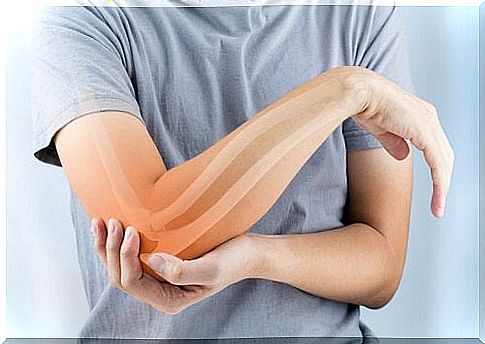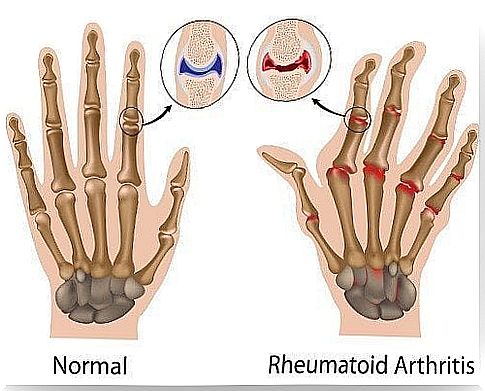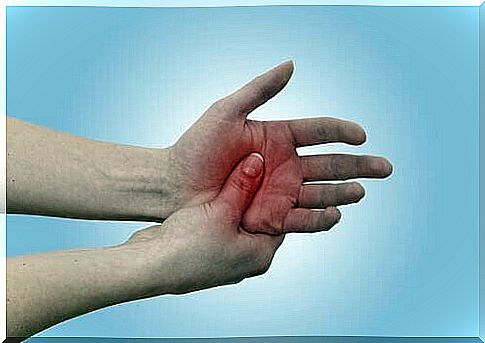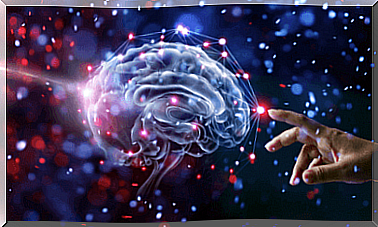Rheumatoid Arthritis: Symptoms, Causes And Treatment

It is estimated that rheumatoid arthritis affects between 0.5% and 0.8% of the world population, although there are many undiagnosed people.
This disorder mainly affects women between 30 and 50 years of age, and greatly reduces the quality of life of patients, since it reduces joint mobility and makes any movement painful.
The term is a composition of words of Greek origin and means “inflammation of the joint”, as this is the main manifestation of the disease. Although it can manifest itself in much of the body, this inflammation is more common in the joints and is often accompanied by muscle pain and fever.
What is rheumatoid arthritis?
Arthritis is, as we have seen, an inflammation of the joints; the term “rheumatoid” is a non-specific term referring to similar pain in joints, bones, cartilage, muscles, ligaments, tendons, and connective tissue. Not to be confused with the term “arthrosis” referring to bones.
Rheumatoid arthritis has no known origin. Its clinical picture can be found in texts for centuries, but a clear cause has not yet been identified. It is known that the immune system participates, so it is considered an autoimmune disease, and some risk factors can be taken into account.

It is a degenerative disease, which means that its symptoms inevitably get worse over time, and nothing can be done other than palliative care. A disease patient’s joints deform painfully into awkward postures that cannot be undone. Necessarily, those affected by the disease see their autonomy reduced and cannot develop their life normally.
Risk factors for rheumatoid arthritis
The main risk factors for arthritis are genetic: approximately 60% of cases have genetic factors. This means that if we have family members, especially first-degree relatives, who suffer from the disease, the probability that we will also suffer from it in the future increases.
Another risk factor mentioned before is the patient’s gender. Women are two to three times more likely to suffer from the disease. It is believed that this propensity is due to the presence of a greater amount of estrogen, which stimulates the immune system. Another hormone that is related to the disease is testosterone: men with low levels of testosterone are more likely to suffer from rheumatoid arthritis.
Effects of Rheumatoid Arthritis on the Body
As it is an autoimmune disease, RA has a preference for joints. During the first stage of the disease, symptoms can only be seen in the blood, where higher-than-usual antibody production develops.
It is in the second stage that the most common symptom appears: inflammation of the joints, which presents the key to the diagnosis of the disease. The second stage is characterized by the growth of synovial structures around the joint. The third stage is characterized by chronic inflammation. At this stage the structures surrounding the joint begin to degrade cartilage and bone.
However, the fact that RA has a preference for joints does not necessarily mean that this is the only part of the body affected: other areas or systems of the human body can also be affected. Anemia, for example, is a common consequence of RA, as are pleurisy, pulmonary fibrosis, and pulmonary nodules.

Treatment of rheumatoid arthritis
Among the most common treatments are anti-inflammatory drugs, which act on areas affected by the disease. In the early stages of RA, moderate exercise is recommended, which helps to delay the onset of more serious inflammation.
At other times, rest is more recommended, accompanied by visits to the physiotherapist. Other recommendations are: dietary modification and abandoning unhealthy habits, such as tobacco or alcohol consumption.
As we have seen before, rheumatoid arthritis is currently not curable, so its treatment will always be palliative. In other words, the drugs used in the treatment aim to delay the last stages of the disease and ensure that the patient develops his daily life normally. However, as it is a degenerative disease, this purpose cannot always be fulfilled.









